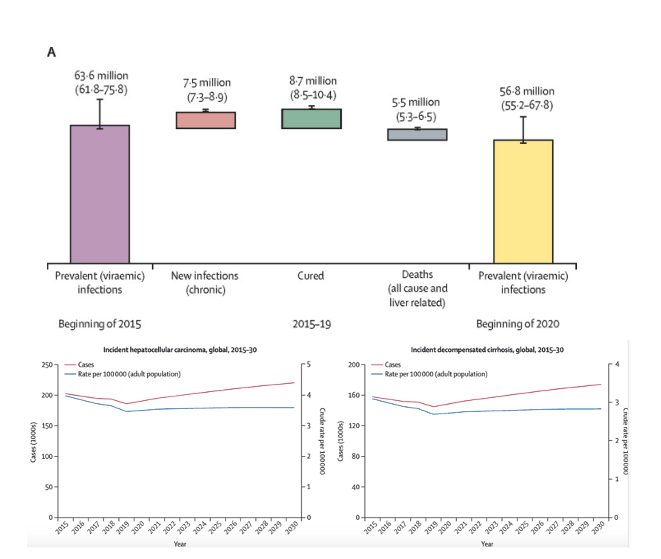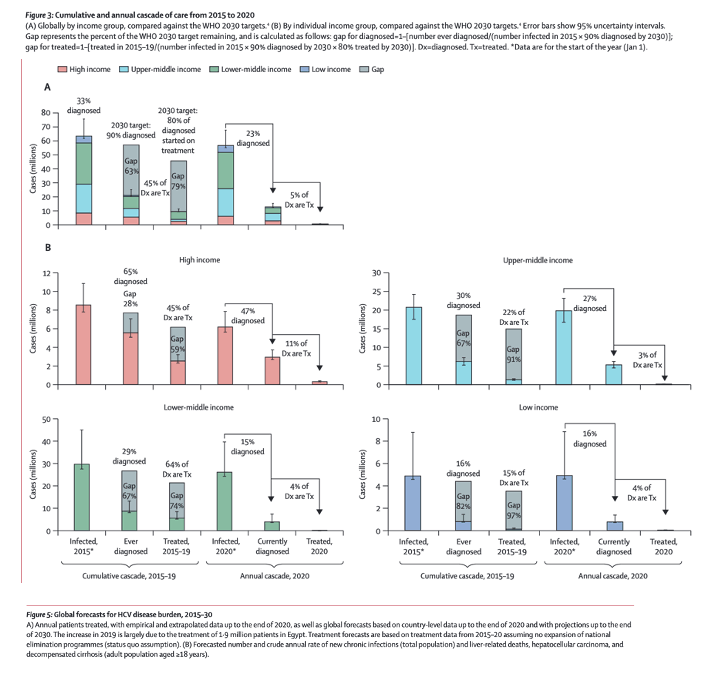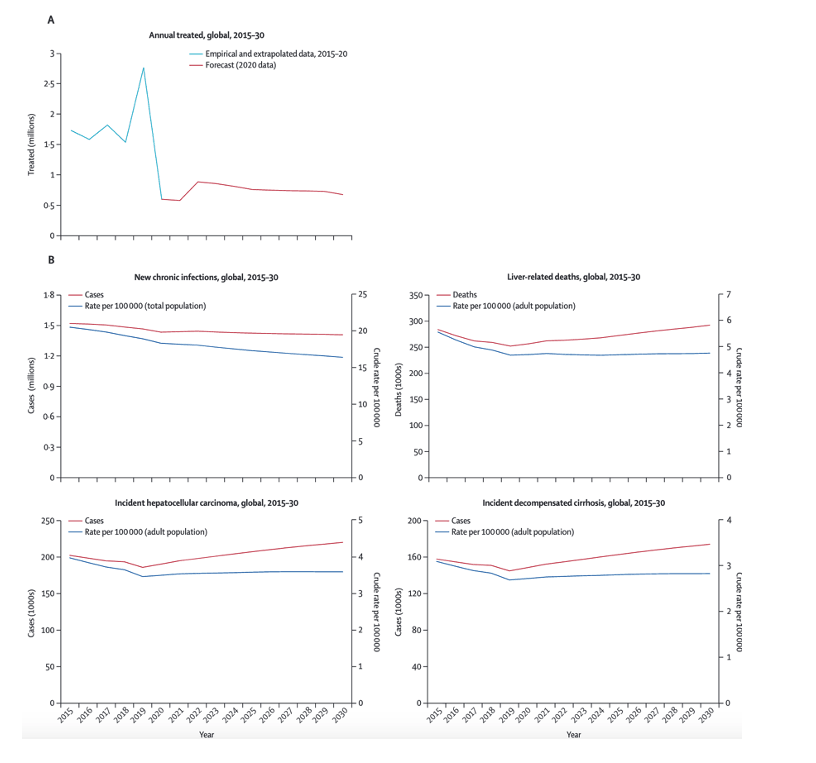| |
Global HCV Cascade No Progress/Worse Liver
Deaths/HCC Increase Expected 2015-2020 Modelling
Global change in hepatitis C virus prevalence
and cascade of care between 2015 and 2020: a modelling study
|
| |
| |
Download the PDF here
We estimated a decrease in the global prevalence of HCV from 2015 to 2020; however, 56⋅8 million viraemic infections were still estimated in 2020, with only 12⋅9 million diagnosed. More than 10 million people were estimated to have initiated DAA therapies in 2015-20, with more than a third of treatments occurring in Egypt. With the Egyptian programme reaching near completion in 2019, global treatment forecasts declined substantially. Treatment further declined in 2020, partially due to the depletion of patients awaiting DAA treatment, the COVID-19 pandemic, and other factors. If treatment remains below 1 million patients per year, as is currently estimated, then liver-related deaths and other end-stage outcomes could be expected to increase globally by 2030. Thus, countries should continue to pursue HCV elimination efforts through screening, diagnosis, and timely treatment. The data presented herein provide a call to action for the global hepatitis community and can serve as a reset point for countries revisiting HCV elimination efforts in the wake of the COVID-19 pandemic.
On the basis of empirical data and future treatment forecasts, the global annual number of new (incident) chronic infections in the total population was expected to remain relatively constant (2% decrease from 1⋅43 million in 2020 to 1⋅40 million in 2030) with a mean of 1⋅42 million new infections expected each year up to the end of 2030 (figure 5B). By 2030, end-stage outcomes in the adult population (age ≥18 years; liver-related deaths, hepatocellular carcinoma, and decompensated cirrhosis) were expected to increase by 14-17% relative to 2020 (257 000 liver-related deaths in 2020 to 290 000 in 2030; 190 000 incident hepatocellular carcinoma cases in 2020 to 220 000 in 2030; and 148 000 incident decompensated cirrhosis cases in 2020 to 174 000 in 2030; figure 5B).
The top ten drivers of uncertainty contributing the most to the global prevalence range (as per the sensitivity analysis) are shown in the appendix (p 36). These top ten drivers of uncertainty accounted for more than 95% of the total variance in global prevalence.



| |
| |
| |
|
|
|